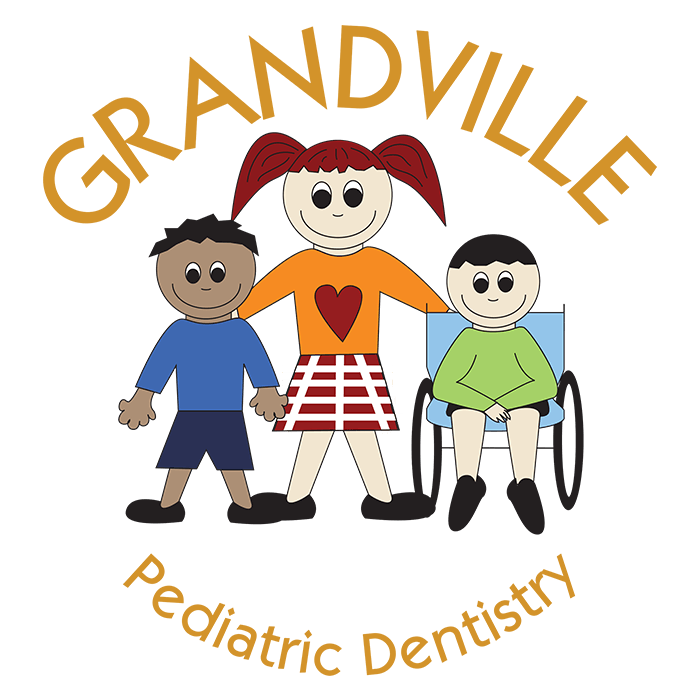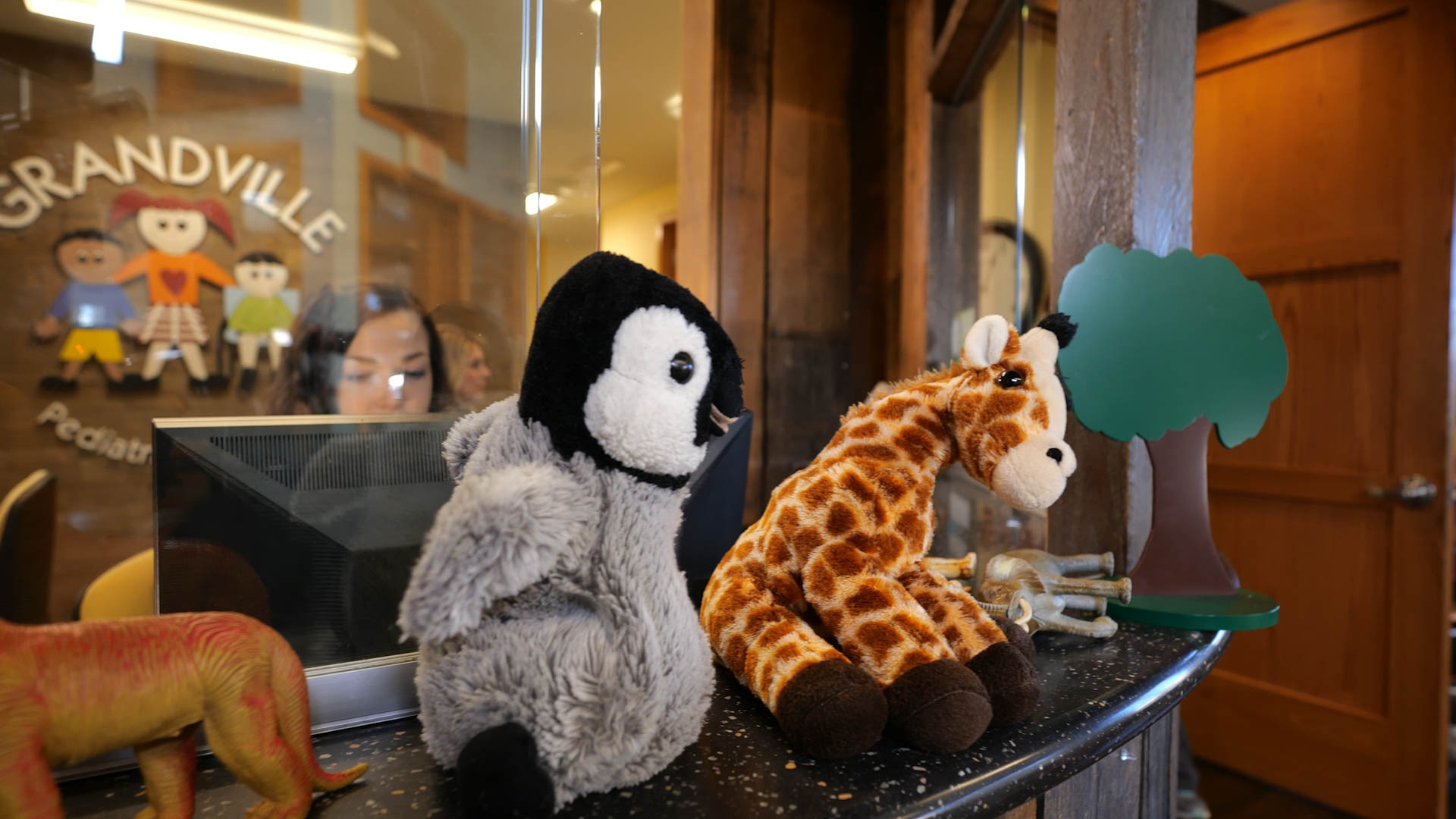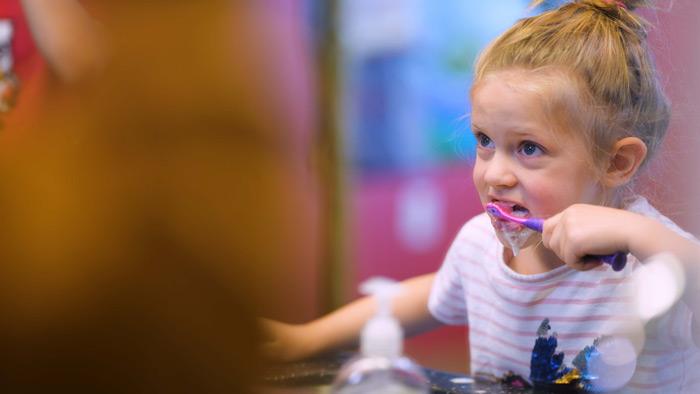Have dental questions? Our pediatric dentists have the answers! Take a look at our answers to some frequently asked questions below. If your question isn’t answered here, call at (616) 531-3430 or contact us online.
What Kinds of Teeth Are There?
We tend to categorize by shape and permanence.
Shape
Your front teeth are called incisors. Your sharp “fang-like” teeth are called canines, and the next side teeth are called premolars or bicuspids. The teeth in the back of your mouth are your molars.
Permanence
Your first set of teeth is known as your primary teeth or your baby teeth. Babies begin to teeth in infancy through toddlerhood. Eventually, in childhood, you will begin to lose your baby teeth to make way for your permanent teeth, also known as your adult teeth.
Certain teeth arrive at certain times; for example, your 12-year molars begin to come in when you’re around 12 years old. Wisdom teeth typically arrive around age 17.
When Do Baby Teeth Come In?
Primary teeth start to appear in children as young as six to eight months old. In most cases, baby teeth have fully arrived by age three.
When Do Permanent Teeth Come In?
Permanent teeth start growing around age six. Except for wisdom teeth, all of your permanent teeth should have fully arrived between the ages of 12 and 14.
How Many Teeth Should You Have?
The total number of permanent teeth is 32. However, few people have enough room in their mouth for all 32 teeth. This is why wisdom teeth are usually removed, leaving only 28 permanent teeth to remain.
When Should Children Start Brushing Their Teeth?
Parents are responsible for taking care of children’s oral health when they are too young to brush their own teeth. With infants, parents should clean their child’s gums after each feeding with a water-soaked infant cloth to stimulate the gum tissue and remove food. Once teeth begin erupting, gently brush them with a small, soft-bristled toothbrush using a pea-sized amount of fluoridated toothpaste.
Children can begin learning proper brushing techniques around age two or three years old. However, they will likely need to be supervised until about six or seven years old. At that age, you can also teach them how to floss.
How Do You Brush Your Teeth?
Proper brushing techniques involve moving the brush in small circular motions to reach food particles that may be under your gum line. Hold the toothbrush at an angle, and brush slowly and carefully, covering all areas between teeth and the surface of each tooth.
It will take you several minutes to thoroughly brush your teeth. The recommends brushing for at least two minutes twice a day. Make sure to brush up on the lower teeth, down on the upper teeth, and outside, inside, and on top of the chewing surface of all of your front and back teeth. Don’t forget to brush your tongue and the roof of your mouth before you rinse.
At Grandville Pediatric Dentistry, we actually recommend brushing your teeth four times a day to ensure maximum cleanliness and health:
- In the morning after breakfast
- After lunch or right after school
- After dinner
- Before bedtime
Do not swallow any toothpaste; rinse your mouth thoroughly with water after you finish brushing. It is important to carefully floss and brush daily for optimal oral hygiene. As soon as the bristles start to wear down or fray, replace your toothbrush with a new one.
How Do You Floss?
Pull a small length of floss from the dispenser. Wrap the ends of the floss tightly around your middle fingers. Guide the floss between all teeth to the gum line, pulling out any food particles or plaque. Unwrap clean floss from around your fingers as you go, so that you have used the floss from beginning to end when you finish. Floss behind all of your back teeth.
Floss at night to make sure your teeth are squeaky clean before you go to bed. When you first begin flossing, your gums may bleed a little. If the bleeding does not go away after the first few times, let our team know at your next appointment.


